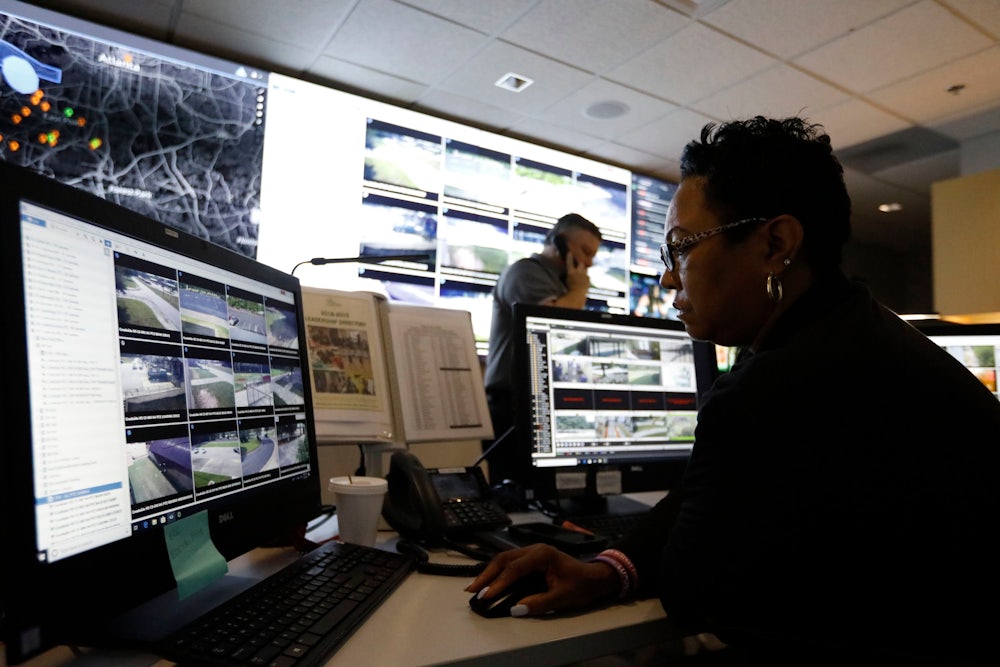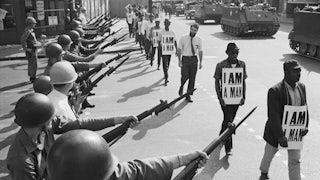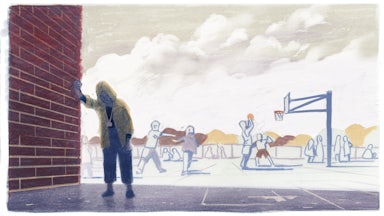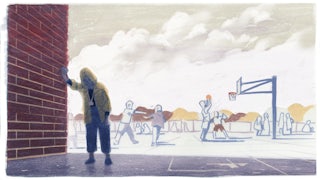Gun control in America doesn’t just move slowly, it moves backward. After school shootings, gun sales only increase, while right-wing politicians call for more weapons, cameras, and intense security measures in schools. And as the U.S. Senate reportedly comes close to a deal to move forward on modest gun legislation, it appears national Democrats are also ready to support throwing money at schools to supposedly enhance their security. But a closer look at these school security devices—largely untested technologies developed for the military and traditional policing—reveal they’ve taken on an almost talismanic power, promising to ward away evil from children, with minimal evidence to back up their claims.
One day after the Robb Elementary School shooting in Uvalde, Texas, where a gunman killed 19 students and two teachers, Governor Greg Abbott held a press conference in Uvalde High School auditorium, promising to double down on the state’s “school hardening” plans, passed in 2019 after a 2018 school shooting near Houston that killed 10. The bills, which provided $100 million in funding for security improvements such as CCTV cameras and bulletproof glass, “hardened schools, made them safer, [and] addressed mental health,” Abbott said, before recommitting to increasing the pace of hardening schools.
Astonishing though it is to tout the effectiveness of a bill that later failed to prevent the deaths of 19 children, Abbott’s approach has the near-total support of the GOP, both in Washington and in state legislatures across the country: make schools less like schools and more like high-security facilities. There’s no universal definition for the measures, but generally speaking, “hardening” schools is an assortment of expensive changes meant to minimize losses in the event of a shooting: restricting access to a single entry point; monitoring who comes and goes; installing metal detectors, cameras, police officers, and so on. But rather than protecting kids from mass shootings, these measures instead add extra surveillance and policing targeted at Black and brown students.
The school hardening industry has a rhythm of boom and bust not unlike that of the firearms industry. Firearm sales spiked after Uvalde, just as they did after the Marjory Stoneman Douglas High School shooting in Parkland, Florida. Surveillance startups are similarly presenting their equipment as potential lifesavers in the wake of Uvalde, just as they did after Parkland, even if much of the technology sounds like science fiction and is still unproven in its ability to prevent shootings.
In early June, Axon, a body-camera manufacturer, announced that it would develop a weaponized “nonlethal” drone meant to incapacitate school shooters. Backlash was immediate: Nine of Axon’s 12 ethics board members resigned in protest. While it grounded the proposal, other companies are quietly pitching untested technologies to schools. Companies like ZeroEyes, which sells weapons-detecting drones to schools, claim the viewpoint provides advanced reconnaissance for responding officers. Athena, another security company, sells artificial intelligence–enabled cameras to schools, claiming they detect weapons even before they’re brandished. Knightscope’s line of metal-detecting robots purport to do the same.
But student advocates have warned that hardening schools doesn’t make schools less vulnerable to shooters, it makes them less safe for the most vulnerable students. Especially for Black students, who are already disportionately punished in schools and face even greater risk as schools turn to high-tech surveillance and intensified security measures.
Experts who study racial disparities in schools speak often of the “school to prison pipeline,” a phenomenon where nonwhite students are punished more harshly in schools than white students for the same offenses, exposing them to law enforcement, the juvenile justice system, and ultimately, the adult prison system. A 2016 study from the University of Florida’s Levin College of Law found that the racial makeup of the student body was predictive of a school’s decision to employ “hardening” tactics such as metal detectors, surveillance cameras, and armed police. This was true even when controlling for neighborhood crime or the frequency of violent crimes within the school itself.
Studies have found only mixed results in terms of the effectiveness of hardening strategies, but experts have long flagged concerns on the effect they have on students, especially those from marginalized communities. Despite this, robust gun control measures—background checks, gun buybacks, banning literally anything—seem a faraway fantasy in this country, even as cameras that scan visitors’ faces and match them against a blacklist are already in use.
That hasn’t slowed the push for hardening. Republican senators were quick to reject universal background checks or a high-capacity magazine ban in the current bill being hammered out in the Senate. A teenager will still be able to buy an assault weapon on their eighteenth birthday. However, the bill does offer funds to beef up school security.
Security and surveillance companies are highly attuned to calls for hardening; it usually means big business. The 2019 Texas bill allocated $100 million in grants for schools seeking to purchase new equipment, a potential payday for vendors.
School campuses in California and New Mexico have turned to always-on listening devices that detect the sound of gunfire. Strategically placed in elevated positions around campuses, the microphones are designed to alert authorities to the location of a shooting and number of shots fired, before a 911 call. The earliest prototypes were designed by the military to detect enemy snipers. More recent models are attuned to even raised voices and the sound of fighting as a cause for alarm.
Because of the role of online communities in radicalizing shooters, schools nationwide have spent millions on software designed to surveil students’ online activities, including their social media posts and Google searches. Startups like GoGuardian and Social Sentinel have been criticized for “spying” on students, monitoring the keywords, browsing history, and searches of school-owned equipment. If a student searches words pertaining to guns or suicide, for example, school authorities are instantly alerted. These tools have a habit of misunderstanding context, however. Social Sentinel has flagged searches about the 2007 movie Shooter and a student happy their credit score was “shooting up.” In a now-deleted blogpost, Gaggle, another monitoring service, said its monitoring tool could be used on teachers searching for terms like strike or layoffs.
And when schools went remote in the wake of the pandemic, this surveillance only broadened. Several of the surveillance start-ups admitted their software is required on school equipment, even when students take laptops and tablets home for remote learning. Teachers reported getting live updates of their students’ devices, even being able to remotely monitor and close and open tabs on students’ browsers. The Dallas Morning News reported last year that Texas has the nation’s highest number of school districts working with surveillance companies—including Uvalde, which contracted with Social Sentinel to monitor keywords.
A report last year from the Center for Democracy and Technology found a stark racial divide in who was most likely to be monitored by the software. Children whose families could afford their own laptops could essentially opt out of the additional surveillance. Less wealthy students, who tended to be students of color, could not. When CDT authors spoke with students, six out of 10 said they restrict themselves when expressing their ideas because they know they’re being monitored.
If schools push for surveillance and intense security, the concern is that the predisposition to punish Black students harshly will have much worse consequences. A 2021 study from American Psychologist found that Black students were more likely to be suspended for “minor infractions” like dress code violations or using a phone in class. This meant less time in the classroom and less time to study, impacting their grades. There’s no information on how this impacts white counterparts because, as noted by the American Psychological Association write-up, “too few white students received minor infraction suspensions to run an analysis that would reach statistical significance.”
Black students are already alienated from the school system. There’s still very little evidence to suggest hardening schools saves lives, and yet the potential costs to students are huge if they must now navigate police officers, online tracking, and military-grade surveillance tech. And hardening schools is certain to make them less like schools.






